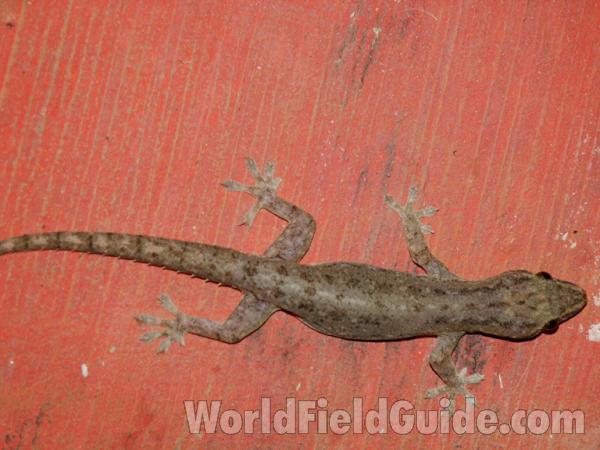SPECIES INFO
Hemidactylus frenatus is found almost worldwide. This gecko was probably originally native to the oriental region including India, China, and the Philippines but has been introduced worldwide to warmer areas. This lizard is usually less than six inches long. This gecko is active during the day and night and feeds on insects. It does well in homes of humans where it crawls up and down walls eating unwanted pests.Gecko genus Hemidactylus contains about 75 species of tree living species native to Eurasia, southern Asia, Africa, and warmer America. Most species are less than eight inches long. These geckos do not have movable eyelids but have a vertical pupil.
Geckos (Family Geckonidae) are found worldwide, are generally friendly and eat lots of insects, which makes them beneficial. Many of the species in this family make excellent pets. (We have seen this family spelled Gekkonidae.)
Lizards and Snakes (Squamata Order) share many common characteristics and consequently they are grouped in a single order. There are greater differences between some groups of lizards than there are between other groups of lizards and snakes. The same is true of snakes. Lizards and snakes share a common skull shape.
There are perhaps 4,000 species of lizards and perhaps 2,700 species of snakes alive today. In the Great Big Book of Snakes and Reptiles published in 2014, they noted the above estimates.
Reptiles (Class Reptilia) are an ancient group of scaled chordates. These scales may be permanently joined, as in the turtles, or flexible, as in the snakes. Reptiles are land-based. Their eggs are laid on land and the young are air breathing.
In the Great Big Book of Snakes and Reptiles published in 2014, they noted that there are more than 7,000 species of reptiles alive today.
Backboned Animals (Phylum Chordata) are the most advanced group of animals on earth. These animals are characterized by having a spinal cord or backbone. Most members have a clearly defined brain that controls the organism through a spinal cord. Fish, amphibians, reptiles, birds, and mammals are in this phylum.
Currently, some taxonomists believe that the fish should be divided into two groups (sharks and regular fishes) and that there are some other primitive groups in the phylum such as hagfish or lampreys.
Animal Kingdom contains numerous organisms that feed on other animals or plants. Included in the animal kingdom are the lower marine invertebrates such as sponges and corals, the jointed legged animals such as insects and spiders, and the backboned animals such as fish, amphibians, reptiles, birds, and mammals.

